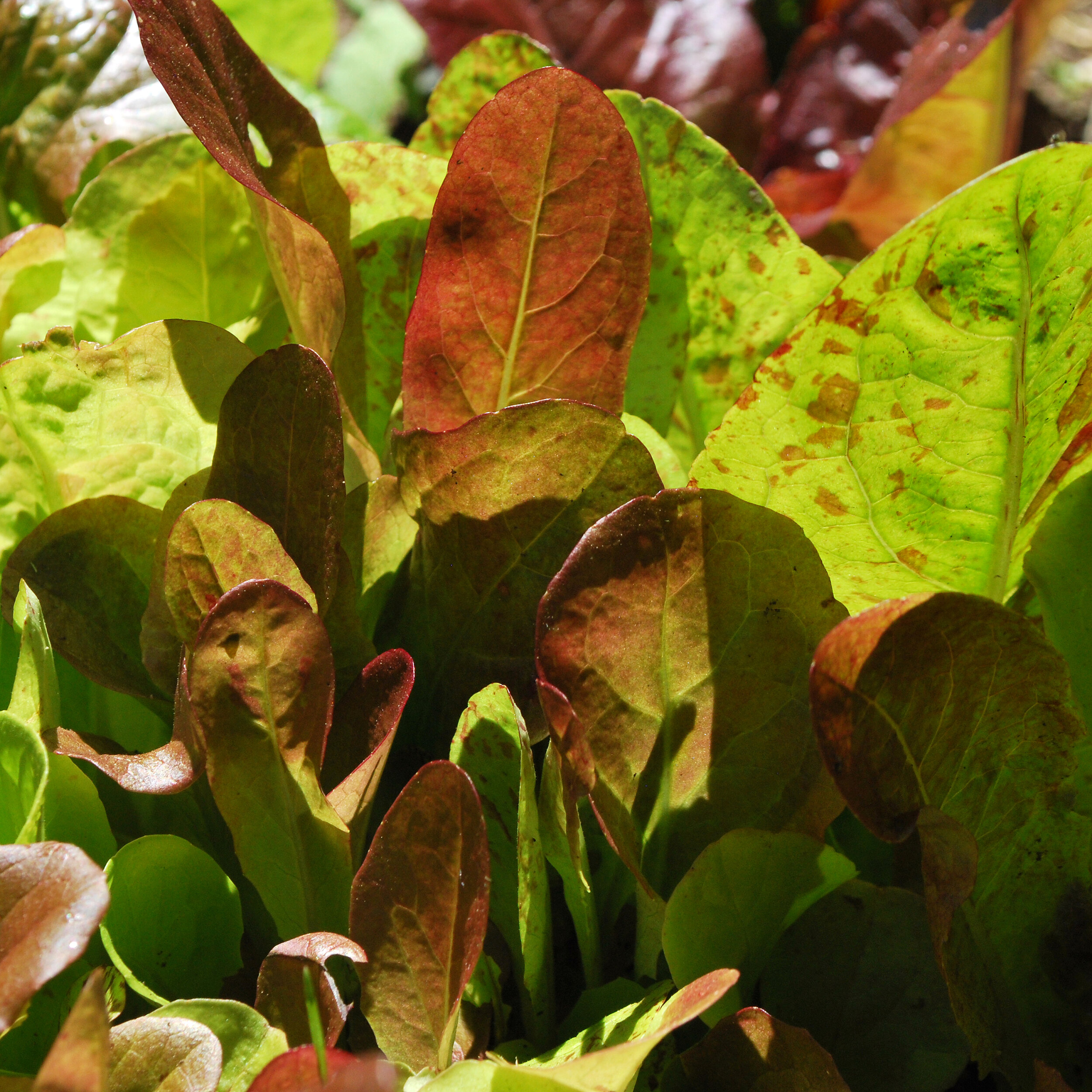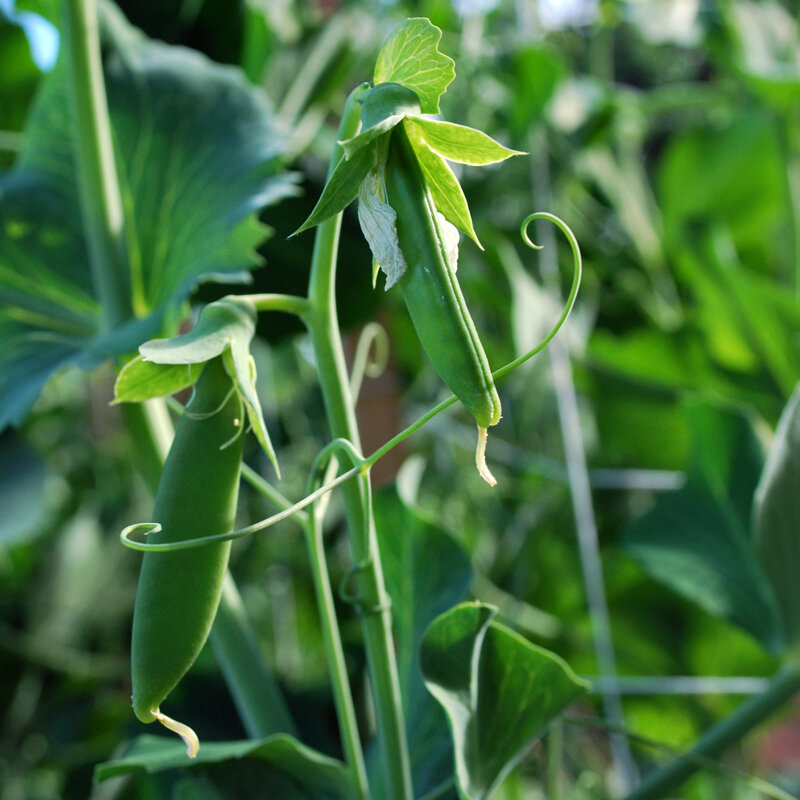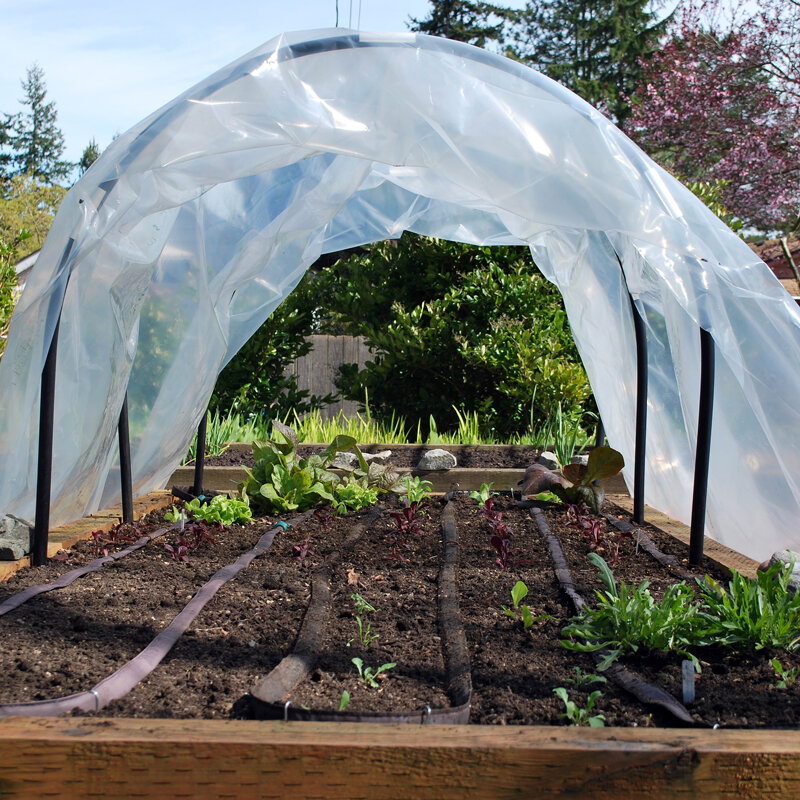We are so lucky in the Pacific Northwest to be able to grow veggies nearly year-round (with a little help from season-extending materials), but the fact is that many vegetable gardeners don’t take advantage of the opportunities that exist in mid-to-late summer to plant vegetables for fall or extra-early-spring harvests.
Maybe we’re all a little less confident about what to plant and when. Or maybe, arms laden with enormous squash and eyes glued to ripening tomatoes, we stay in the “care-and-harvest” zone, forgetting that too soon we’ll be lamenting the lack of garden-grown produce (and sunshine).
Maybe we hear the term “fall vegetable garden” and think fall planting. But late June-September are ideal times to plant. Whether you already have a thriving edible garden or haven’t had time to start a vegetable patch this year, it’s time to get outside and get started! This fall gardening guide will help you plan and plant a successful fall garden.
Planning the Fall Vegetable Garden
Missed planting peas last spring? No problem. In the PNW, we can grow peas for a fall harvest! Have some space where your newly-harvested lettuce used to grow? It’s the perfect spot for fall beets, broccoli, or even more lettuce.
Let’s look at where to plant, how to improve the soil, and whether you should plant seeds or “starts” (baby plants), then I’ll provide a list of vegetables suitable for the fall/winter garden and tell you when to plant each one.
Where to Plant
When planting for autumn, it's a good idea to practice crop rotation. If you can, plant something different than what you had in that spot in spring and summer. This is especially important for crops in the Cabbage family (broccoli, kale, radishes) and Beet family (beets, swiss chard, spinach), as well as carrots and onions. Some of the pests that attack these vegetables could still be around and planting the same thing in the same spot makes it all that much easier for them to feast.
Remember also that you can sow seeds or even plant starts (baby plants) in tight spaces if the vegetables that are currently growing there will be harvested soon. Radishes and carrots can be planted in between rows of maturing lettuce or bush beans, for example. And you can sow lettuce between rows of overwintering cabbage or cauliflower.
Improving the Soil
Your summer vegetables have most likely used up essential nutrients in the soil, so adding a natural vegetable fertilizer (we like Dr. Earth or Espoma brand) will give your new plants a much-needed boost. You can also amend your soil with high-quality compost, such as E.B. Stone Planting Compost or G&B Organics Harvest Supreme. For containers, always use potting soil (again, E.B. Stone and G&B Organics offer excellent options) mixed with fertilizer, added according to package directions.
Now is also the time to mulch your soil, after planting, with several inches of compost (Gardner & Bloome Soil Building Conditioner is great as mulch) to keep summer's heat in the soil and help retain soil moisture.
If you decide not to plant your entire space, consider sowing a cover crop such as crimson clover, vetch, winter peas, or favas in the fall. These legumes are nitrogen fixers and will improve your soil. Let them grow through the winter, then till them into the soil in spring before they go to seed (I can't emphasize that enough), and voilà - improved soil!
Starts or Seeds?
Planting starts will allow you to harvest earlier in many cases. For many of the edibles mentioned below, starts are preferable to plant in August. However, fast growers like lettuce, parsley, radishes, arugula, or vegetables you will harvest small (baby carrots and young leaves of spinach, kale, and Swiss chard) can easily be grown from seed or starts, depending on your preference. If sowings of seed fail to germinate in early August because of heat and inconsistent water, try again in late August and September when they may germinate more easily.
Note: plant starts can be planted up to 2-3 weeks later than seeds must be sown.
Many vegetables have varieties that are best suited for fall and winter. At Swansons, we carry fall gardening varieties of plants and seeds in July and August. You can also check seed packet information to see if a variety is recommended for fall gardening.
What to Plant
Vegetables are often separated into two groups: cool-season and warm-season. The warm-season veggies are at their peak at the height of summer: think tomatoes, squash, cucumbers, and peppers. Cool-season veggies prefer milder weather and can generally be planted in spring and again in late summer/early autumn.
Some cool-season veggies grow fairly quickly and, if you plant them now, you will be able to harvest this year. Lettuce, most greens, radishes, and peas can be harvested before the first frost or covered for protection (see “Cold Protection,” below) while beets and carrots can handle a little frost and may even become sweeter for it.
Other cool-season vegetables can be planted mid-summer to fall but won’t be ready to harvest until next year. They will “overwinter,” meaning they will stay mostly dormant until early spring and then begin growing again, giving you earlier harvests than if you waited to plant them until early spring.
So what should you plant? Here are some options. Remember, if you plant starts instead of sowing seeds, you can plant up to 3 weeks later.
Fall Harvests
Sow Seeds for These in Late June for Fall Harvests
These vegetables need a long head start to be ready for harvesting before winter.
Beets
Brussels Sprouts
Cabbage
Carrots
Cauliflower
Green Onions
Swiss Chard
Turnips
Sow seeds for These in Early or Mid-July for Fall Harvests
These vegetables need to be sowed in the middle of summer so they will have time to mature by fall.
Baby Carrots
Beets
Broccoli
Cauliflower
Chinese Cabbage
Kale
Kohlrabi
Peas (look for dwarf and enation-resistant varieties)
Swiss Chard
Sow or plant These in Late July for Fall Harvests
You have a little more leeway with these vegetables, which are fast growers.
Asian Greens
Bitter Greens (Arugula, Endive, Radicchio, Mustard)
Bok Choy
Broccoli Rabe
Collard Greens
Green Onions
Lettuce (benefits from some shade in the hottest part of the day)
Peas
Radishes
Spinach
Swiss Chard
Sow or Plant These in August for Fall Harvests
These greens and fast growers like cooler weather. You can sow seeds every week throughout August to have a longer harvest period in the fall.
Asian Greens
Bitter Greens (Arugula, Endive, Radicchio, Mustard)
Broccoli Rabe
Green Onions
Lettuce (benefits from some shade in the hottest part of the day)
Mâche
Radishes
Spinach
Swiss Chard
Herbs For Fall Harvest
There are also several herbs that, if planted from starts in mid- to late summer, will continue to grow throughout fall (and some even well into winter). Oregano, rosemary, sage, and thyme are perennials, meaning they will continue to grow year after year.
Cilantro (can also be easily grown from seed)
Oregano
Parsley
Rosemary
Sage
Thyme
Overwintering for Early Spring Harvests
Plant These in July for Harvests Next Spring
Here are some vegetables to plant from mid-July through the end of the month for overwintering. You will be able to harvest them much earlier than if you wait to plant until spring!
Broccoli
Brussels Sprouts
Cabbage
Cauliflower
Collard Greens
Kale
Onions
Plant These in Late September for Harvests Next Spring
If the weather turns severely cold or rainy, you might want to consider protecting your plants with a cloche (learn more in the section Cold Protection, below).
Arugula
Beets
Lettuce
Mustard
Plant These in Late September to Early November for Harvests Next Summer
For more information, see How to Grow Garlic and Growing Shallots.
Garlic
Shallots
A Note About Watering
All vegetable plants will need regular watering throughout the summer. If sowing seeds, the surface of your soil needs to be kept moist or they will not germinate. It takes a little work, but by early fall, the mix of warm soil, mild temperatures, and rain create the perfect conditions to help your young plants thrive and become well established before winter arrives (I know, I know... It’s too early to be talking about winter).
Cold Protection
One way of extending the growing season (this also works for early-spring planting) is to use a row cover or cloches to protect your veggies and keep them warm. Row covers are lightweight fabrics that allow air, sun, and water to penetrate, but raise soil temperatures by approximately 5 degrees. They can be loosely laid over starts or newly-sown seeds, the edges secured with u-stakes, rocks, or boards. Be sure to allow room for plants to push the fabric up as they grow. This fabric also protects crops from birds and insect pests.
Another option is to cover your individual plants or the whole garden bed with a cloche. They come in many forms: glass domes, plastic sheeting laid over PVC tubes and secured, or even DIY liter soda bottles. Google ‘DIY cloches’ and get lost in the myriad results. If you do use a hoop cloche with plastic sheeting, vent the sides during the day to allow for airflow.
A Few More Resources for the PNW Gardener
Swansons Nursery wants to help make your garden project a success, so we encourage you to take advantage of these resources. You can find helpful information on our NW Gardening Tips page and please ask us any questions by tagging us on social media or reaching out via email!
Books
Seattle Tilth’s Maritime Northwest Garden Guide
Growing Vegetables West of the Cascades by Steve Solomon
Food Grown Right, in Your Backyard by Colin McCrate and Brad Halm
Cool Season Gardener by Bill Thorness
Territorial Seed Company Catalog (the best 75¢ you will ever spend)
Website & Podcasts
Seattle Urban Farm Company podcast and blog
Amy Pennington’s blog
Sunset Magazine website
Territorial Seed Company website
Editor’s Note: Updated for 2023







